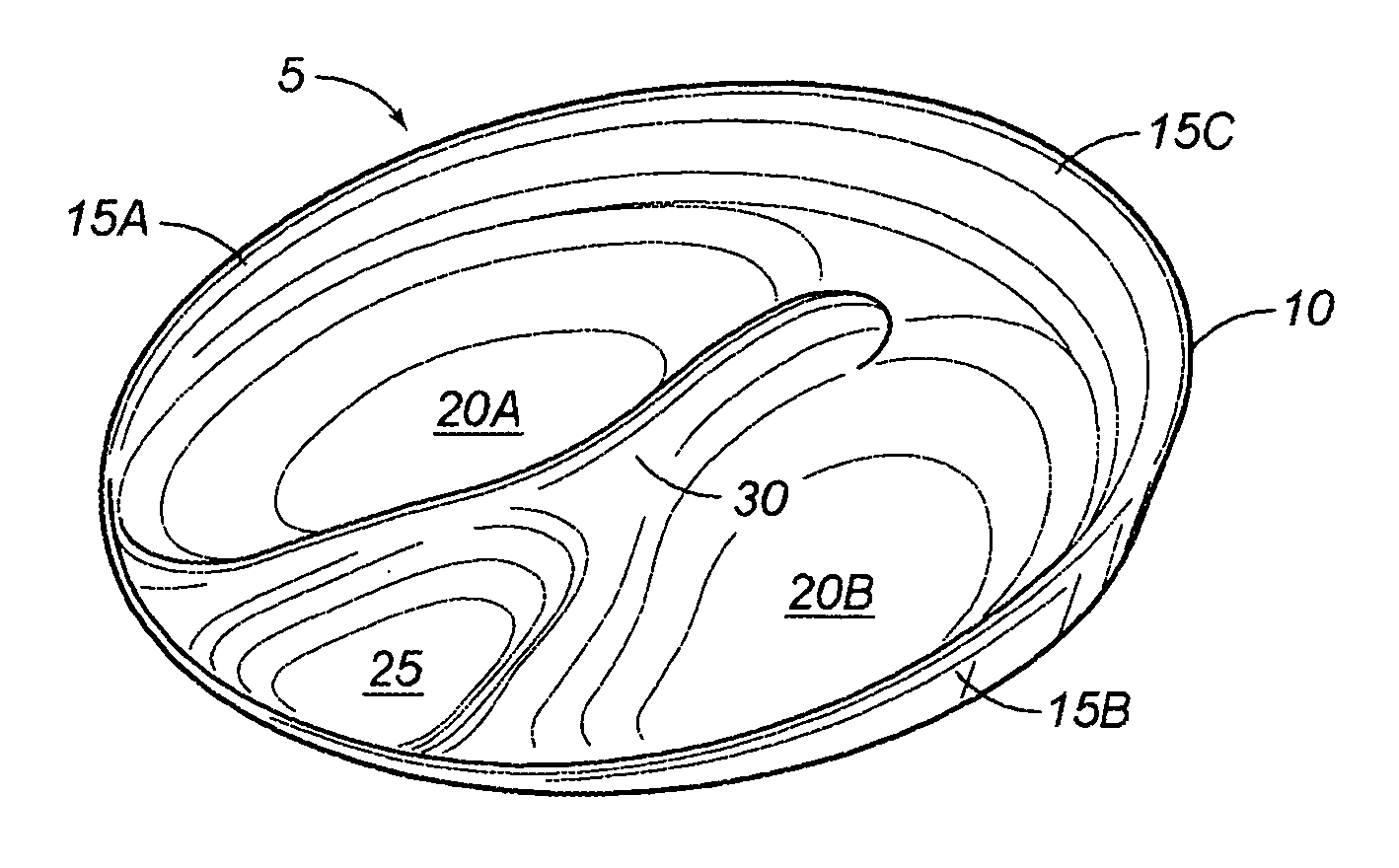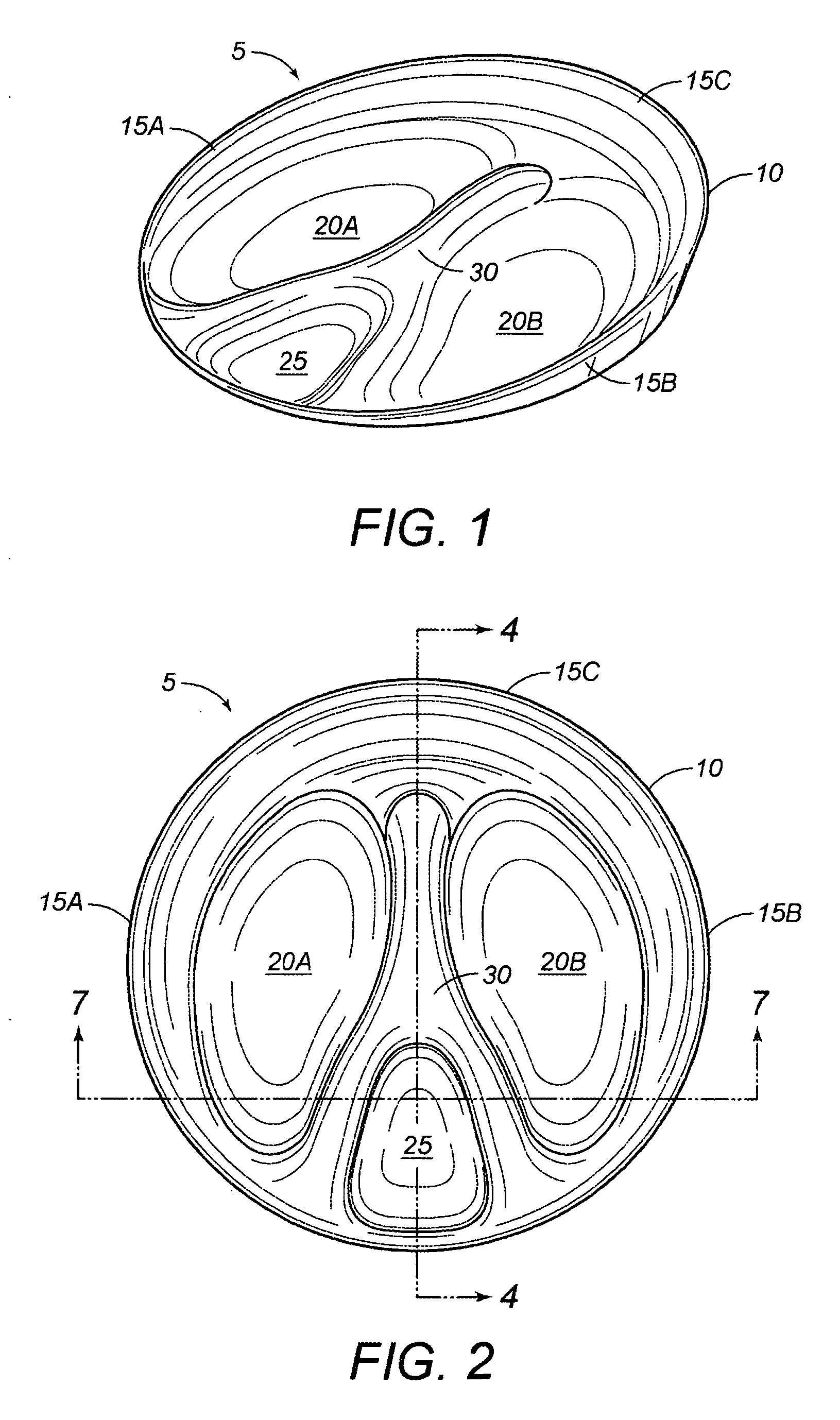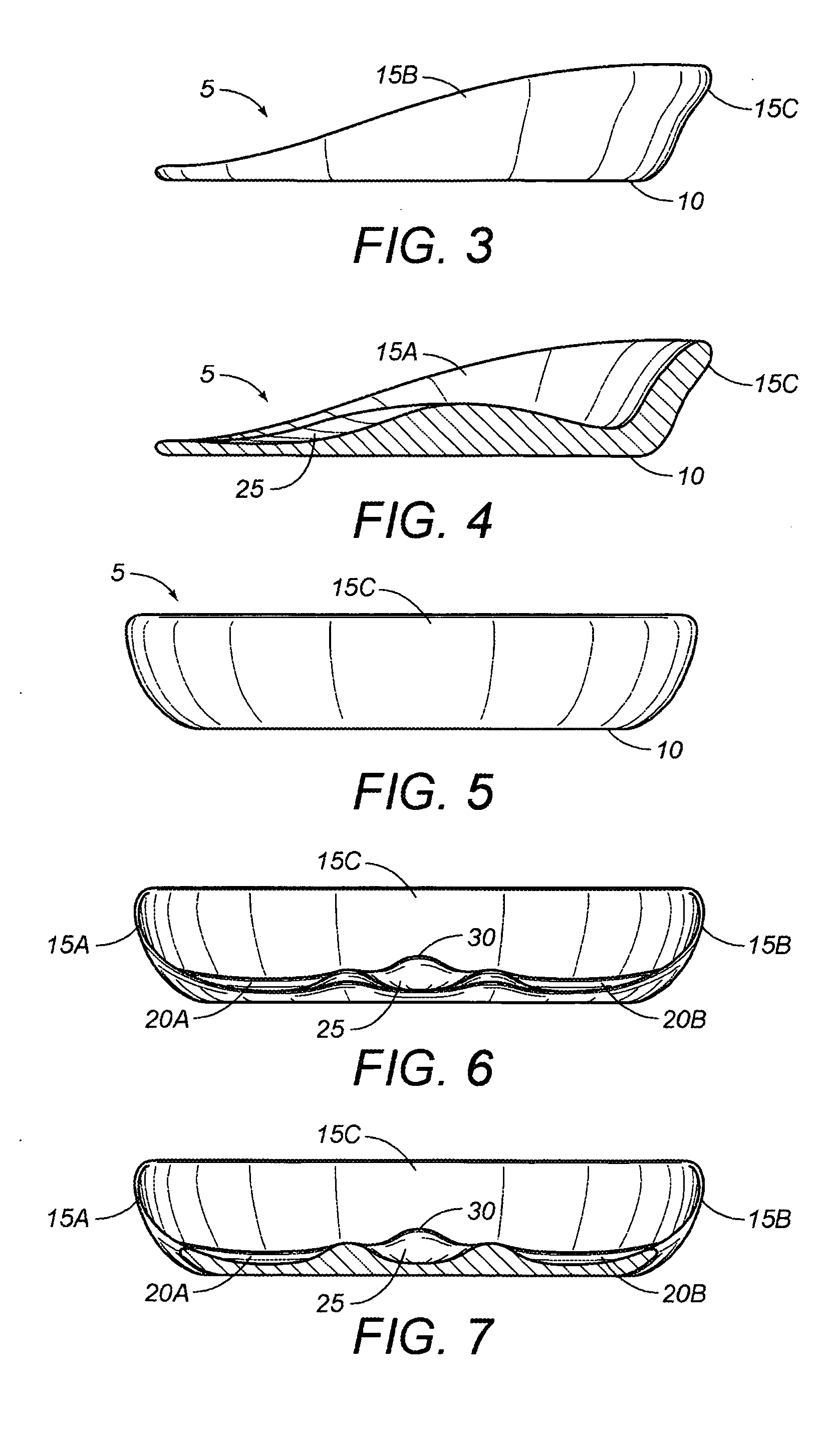Bicycle seat
a seat and bicycle technology, applied in the field of bicycle seats, can solve the problems of serious and permanent damage in both men and women, inability to provide total comfort and safety for riders, and the variety of existing bicycle saddles and seats, and achieve the effect of reducing rider discomfor
- Summary
- Abstract
- Description
- Claims
- Application Information
AI Technical Summary
Benefits of technology
Problems solved by technology
Method used
Image
Examples
Embodiment Construction
[0043] Referring now to collectively to FIGS. 1-7, there may be seen bicycle seat 5 embodying the present invention. Bicycle seat 5 contains a preferably round seating platform 10, sloping lateral edges 15A and 15B and raised rear edge 15C, two concave depressions 20A and 20B located on the side regions of seating platform 10, concave depression 25 located in the front central region of seating platform 10, and a small ridge 30—approximately 0.25 inches in height—separating each of depressions 20A, 20B, and 25. Sloping lateral edges 15A and 15B have a gradual upwards slope, preferably beginning 0 inches in height at the front of seating platform 10 and sloping upwards to a height of 1.0 inches at the rear of seating platform 10, where they join raised rear edge 15C, which is elevated to a constant height of 1.0 inch. The position of the edges is such that a rider's hips are fully supported, thereby preventing lateral sliding during riding.
[0044] Depressions 20A and 20B are configur...
PUM
 Login to View More
Login to View More Abstract
Description
Claims
Application Information
 Login to View More
Login to View More - R&D
- Intellectual Property
- Life Sciences
- Materials
- Tech Scout
- Unparalleled Data Quality
- Higher Quality Content
- 60% Fewer Hallucinations
Browse by: Latest US Patents, China's latest patents, Technical Efficacy Thesaurus, Application Domain, Technology Topic, Popular Technical Reports.
© 2025 PatSnap. All rights reserved.Legal|Privacy policy|Modern Slavery Act Transparency Statement|Sitemap|About US| Contact US: help@patsnap.com



